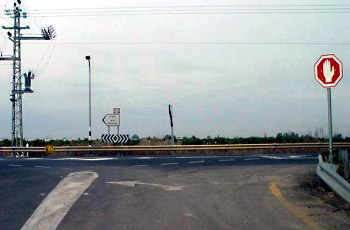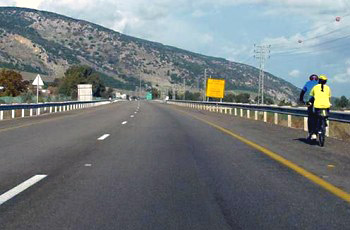Question:1
You step on the brake pedal and feel that the service brake (foot brake) is not working. What will you do?
Category : Safety
Question:2
How can we moderate a situation in which our vehicle skids on the road?
Category : Safety
Question:3
What should you do to reduce the effect of dazzle (blinding) during the dark?
Category : Safety
Question:4
Being familiar with the different systems in the driver’s compartment whilst driving:
Category : Safety
Question:5
What factors affect the stability of a freight-carrying commercial vehicle while driving in a curve?
Category : Safety
Question:6
What risk is a rigid vehicle with trailer or a semi-trailer truck expected to face while driving on a slippery roadway?
Category : Safety
Question:7
A cement mixer is:
Category : Safety
Question:8
Does a-can of beer have a lesser effect on a driver compared to a whisky shot?
Category : Safety
Question:9
What shoukd a driver check after driving through deep water on the road?
Category : Safety
Question:10
Why is a driver required to adjust his sitting position before starting to drive?
Category : Safety
Question:11
Why should we avoid running the vehicle’s engine in a closed placed?
Category : Safety
Question:12
What are the preliminary actions a driver must perform while getting back up to the road from the “hard shoulder”?
Category : Safety
Question:13
What are the advantages in looking far ahead?

Category : Safety
Question:14
In order to overtake safely, the overtaking driver should:
Category : Safety
Question:15
What might be the effect of sand scattered on the road?
Category : Safety
Question:16
What is the main risk of approaching an intersection on a wet road?

Category : Safety
Question:17
How would you avoid colliding with a vehicle that drives in the same direction you?
Category : Safety
Question:18
“Drinking alcohol has a negative effect on the driver’s ability to react”: Correct or incorrect?
Category : Safety
Question:19
In your opinion, is the white vehicle within the curve positioned correctly?

Category : Safety
Question:20
What is the correct sentence?
Category : Safety
Question:21
What are we required to see in the outer side mirrors of the vehicle?
Category : Safety
Question:22
What are the advantages of looking far ahead?
Category : Safety
Question:23
Is it enough to signal only when you begin to drive?
Category : Safety
Question:24
On which part of the semi trailer is a 6.10 meter long freight container loaded?
Category : Safety
Question:25
When you arrive with your vehicle to the place that is illustrated in the following picture, you must:

Category : Safety
Question:26
What is a driver required to do when he feels tired during night-driving?
Category : Safety
Question:27
How are you required to conduct yourself according to the situation depicted in the following picture?

Category : Safety
Question:28
What is the imminent danger when a vehicle skids whilst driving?
Category : Safety
Question:29
How would you behave on the road ahead?

Category : Safety
Question:30
What are the characteristics of a mountain road?

Category : Safety

